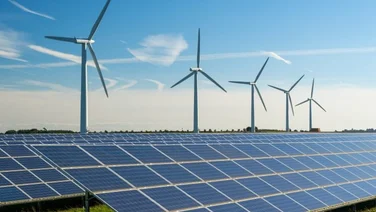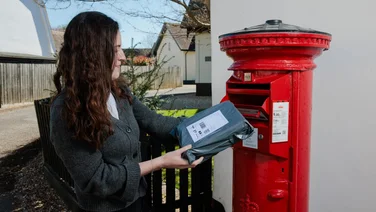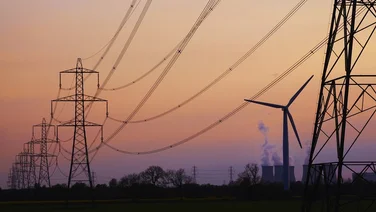- The Qatar World Cup’s carbon footprint will be 4.67 million tonnes of CO2e
- FIFA has long pledged this will be a “carbon-neutral” tournament
- But organisers have committed to offsetting just 10.4% of emissions
The 2022 World Cup in Qatar will have an overall carbon footprint of 4,672,939 tonnes of CO2e*, according to our calculations – more than double the emissions from the 2018 World Cup.
This finding flies in the face of FIFA and Qatar’s long-stated commitment to “a fully carbon-neutral FIFA World Cup 2022.”
The organisers have aimed for years to use offsetting to create a carbon-neutral event – but at this late stage, they’ve only managed to offset 544,022 tonnes – or 10.4% of the tournament’s footprint.
Here’s how we reached this figure – which is more than Burkina Faso, a country of 21 million people, will emit in the same time – and why it matters.
* carbon dioxide equivalent, a measurement that converts all greenhouse emissions into CO2 terms

FIFA and Qatar
3,000,328 tonnes emitted
There’s only one place to start: Qatar’s new stadiums.
Built specially for the World Cup, these seven arenas – which can all fit at least 40,000 people – will emit 2.025 million tonnes of CO2e by the end of the tournament.
That’s just 0.1 tonnes short of the 2018 World Cup’s total carbon footprint.
Six of these stadiums are permanent constructions, while one – Stadium 974 – is a temporary venue made of 974 shipping containers that’s due to be dismantled after the tournament.
That sounds positive, as no-one wants white elephant stadiums that go unused after tournaments, but in fact, Stadium 974’s emissions total is 60% higher than the other venues, according to non-profit Carbon Market Watch.
This is because it was made from materials that can endure being repeatedly taken apart and put back together, and due to the emissions that’ll result from it being dismantled and transported away from Qatar at the end of the tournament.

FIFA’s estimate for all the stadiums’ carbon footprint was 888,852 tonnes – less than half of ours.
This number relies on the idea that the stadiums’ emissions should be measured over their predicted lifespan of 60 years, and that FIFA and Qatar should only be held responsible for 70 days, which covers the 2019 and 2020 Club World Cups, plus the World Cup.
This is, of course, ridiculous. These stadiums would never have existed if not for the World Cup, and therefore their entire carbon footprints must be attributed to the tournament.
Now that the stadiums have been built, they have to be maintained in Qatar’s harsh weather conditions.
This process requires 10,000 litres of desalinated water per day during winter and 50,000 litres per day during summer – which has emitted 27,439 tonnes of CO2e in total.
The fans
2,216,270 tonnes emitted
Organisers have said they expect 1.5 million fans to attend games at this World Cup.
This would be the lowest total since the 1962 tournament, and less than half the number who attended matches at the most recent World Cups in Russia, Brazil, and South Africa – but it’s still set to overwhelm this small Gulf nation.
After many months of waiting, Qatar has finally released hotel rooms it’d previously saved for sponsors and teams, meaning there’s now a total of 175,000 rooms available to supporters.
That’s not enough, clearly, but there are more spaces – in other countries.
Oman, Saudi Arabia, and the United Arab Emirates will issue special 60-day visas to fans who’ll be able to enter and leave the country on multiple occasions. Dubai alone is reportedly ready for an influx of a million visitors.
Most of these fans will fly in and out of Qatar for each match they attend, as the trip by road is long and difficult from locations like the UAE.
This will lead to a horrendously high footprint of 2.2 million tonnes of CO2e.
That’s more than the likes of Bosnia and Herzegovina or Ghana – a country of 31 million people – will produce in the same time period.
The teams
364 tonnes emitted
Don’t blame the players or their expensive team planes for the World Cup’s carbon footprint.
Yes, they’ll emit a ridiculous amount of greenhouse gases by forcing all players to gather in their home countries before making the journey – again by plane – to Qatar.
But the final total of 364 tonnes is dwarfed by the emissions produced by other parts of this World Cup, like stadium construction and fan travel.
The top of the teams list is dominated by South American sides, who’ll each have to travel around 8,000 miles to get to Qatar.
It’s unfortunate – but inevitable – that many national sides will have players plying their trade overseas, meaning they’ll have to make two plane journeys to get to the World Cup.
This especially affects the carbon footprint of teams like Cameroon and Croatia, who are likely to only call up players who live abroad.
This fact will add 6.8 tonnes of CO2e to their totals – which is the same as a UK household emits in a year and a half.
However, the major plus point about holding the tournament in such a small location is that teams won’t have to fly around the country to get to different stadiums – unlike most World Cups.
Offsetting
544,022 tonnes saved
The World Cup’s organisers have issued a total of 544,022 offsetting credits to eco-friendly projects, with each credit representing a tonne that’ll be saved.
That’s 10.4% of the World Cup’s carbon footprint, according to our calculations.
FIFA and the Supreme Committee’s own report into its World Cup carbon footprint produced a predicted total of 3,631,034 tonnes of CO2e, which they said would be fully offset.
The organisers partnered with the Gulf Organisation for Research and Development (GORD) to establish the Global Carbon Council (GCC), with the aim of offsetting 1.8 million tonnes by investing in local eco-friendly projects.
FIFA has explained: “In order to achieve our commitment to deliver a fully carbon-neutral FIFA World Cup Qatar 2022, offsetting GHG emissions through mitigation initiatives will ‘neutralise’ those emissions that cannot be avoided.”
It’s not clear why FIFA and Qatar’s Supreme Committee set an offsetting goal of 1.8 million tonnes when their report indicated the tournament’s footprint would be over twice as big, but in any case, they’ve fallen 70% short of their own target.
Don’t hold your breath for that to suddenly change, either.
In January 2021, the GCC said it expected to hand out 10 million credits by the end of the year. It ended up issuing fewer than 150,000.
“Despite a lack of transparency, the evidence suggests that the emissions from this World Cup will be considerably higher than expected by the organisers, and the carbon credits being purchased to offset these emissions are unlikely to have a sufficiently positive impact on the climate.”
– Gilles Dufrasne of Carbon Market Watch
Who has received offsetting funding?
FIFA and Qatar’s authorities have failed to follow through on their promise that “to promote local and regional climate action, local and regional carbon reduction projects will be prioritised.”
This was part of an ongoing effort by the organisers to sell this World Cup as a way of bringing cultural change to the region, particularly when it comes to the climate crisis.
So far, they’ve handed out credits to a hydropower plant and wind farm in Turkey, and a wind farm in Serbia.
The locations in Turkey are 1,620 and 1,725 miles from Doha, respectively – about as local as Moscow is to London – while the Serbian wind farm is 2,230 miles away, which is the same distance as London to central Nigeria. Local? Hardly.
Tree and turf nursery
As well as trying – and as yet, failing – to buy their way to carbon neutrality, Qatari organisers have also planted 16,000 trees and 679,000 shrubs in an effort to improve their green credentials.
This project required hundreds of trees to be donated from around Qatar. The Supreme Committee said it’s replaced each one with a young tree, but this is likely to be ineffective.
We’ve previously worked out that over the first 20 years of a tree’s life, it only absorbs a total of 39 kg of CO2 – meaning all of these trees will absorb 624 tonnes by the early 2040s.
679,000 shrubs will look eco-friendly but be even less effective, absorbing just 9.4 tonnes of CO2 over the next 20 years, according to our calculations – and that’s assuming they’re replaced regularly.
That’s a total of 633.4 tonnes removed by the tree nursery, which is a drop in the ocean of World Cup emissions – and that’s if it works.
In its report, Carbon Market Watch said: “The claim that this will absorb CO2 emissions from the atmosphere and contribute to reducing the impact of the event is not credible.”
The non-profit added: “In order to have a real climate benefit, this carbon needs to remain stored for centuries, at least 200-300 years, before it can be credibly claimed that this carbon removal contributes to climate mitigation.
“In the case of this tree and turf nursery, it is highly unlikely that the plants will remain alive for this long.”
FIFA and Qatar’s responses
We contacted FIFA and Qatar’s Supreme Committee for Delivery and Legacy for comment.
In response, a FIFA spokesperson said: “FIFA, FIFA World Cup Qatar 2022 LLC and Qatar’s Supreme Committee for Delivery & Legacy have committed to reducing and offsetting all carbon emissions related to the FIFA World Cup 2022.”
A Supreme Committee spokesperson insisted: “We are on track to hosting a carbon-neutral World Cup.”
They added: “The methodology used to calculate the carbon-neutral commitment is best in practice and was designed to be based on actual activity data, after the FIFA World Cup has concluded. This will be published, and any discrepancies will be explained and offset.”
They said the Qatari organisers’ attempts to buy carbon credits “should be recognised, rather than criticised,” and promised to “announce further details of these projects in due course.”
The spokesperson also insisted that 1.5 million carbon credits had been secured so far, despite the publicly available information provided by the GCC showing just 544,022 credits.
Summary
The organisers’ efforts to reduce and offset the World Cup’s emissions have been inadequate to the point of negligence.
FIFA said in 2019 that “the Supreme Committee’s objective is to reach carbon neutrality before the tournament kicks off.”
FIFA and the Supreme Committee have miserably failed in this goal, as well as their aim to offset 1.8 million tonnes of CO2e.
This “carbon-neutral” World Cup is set to emit more than double the 2.17 million tonnes of CO2e produced by the 2018 World Cup in Russia – and the planet will suffer as a result.






